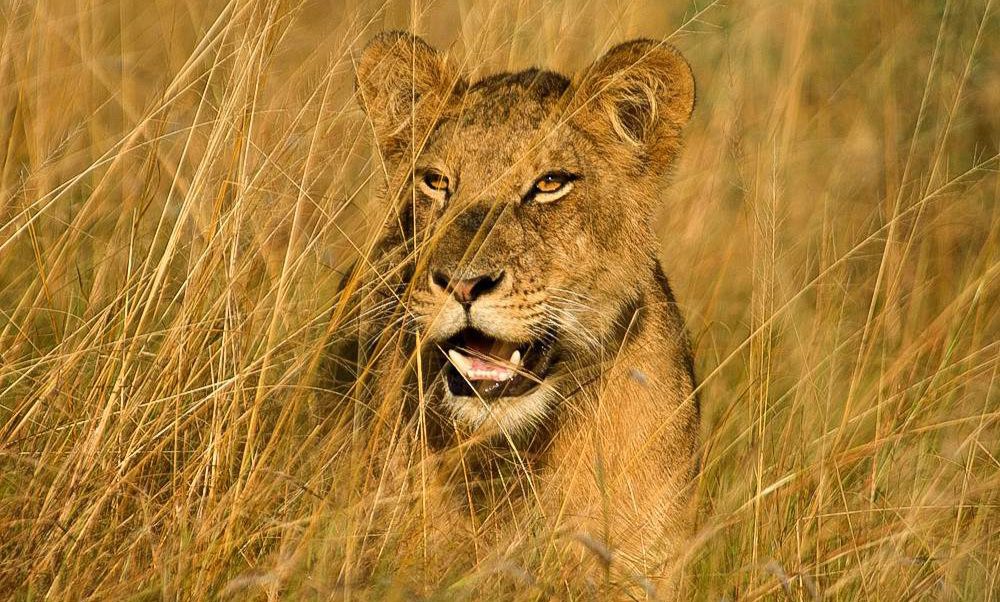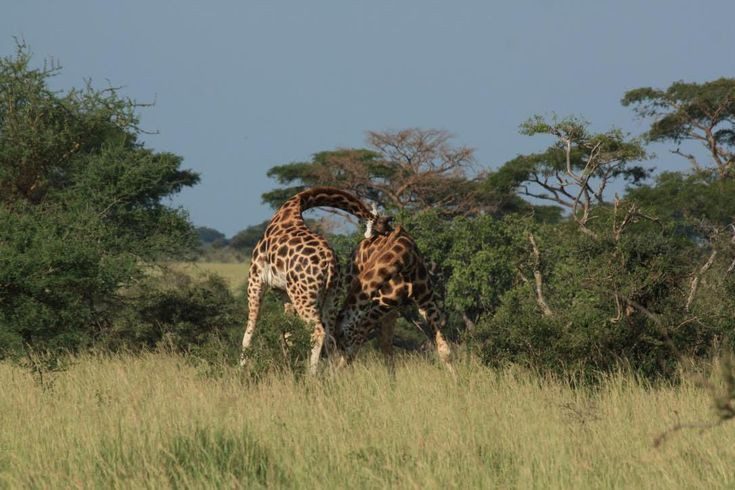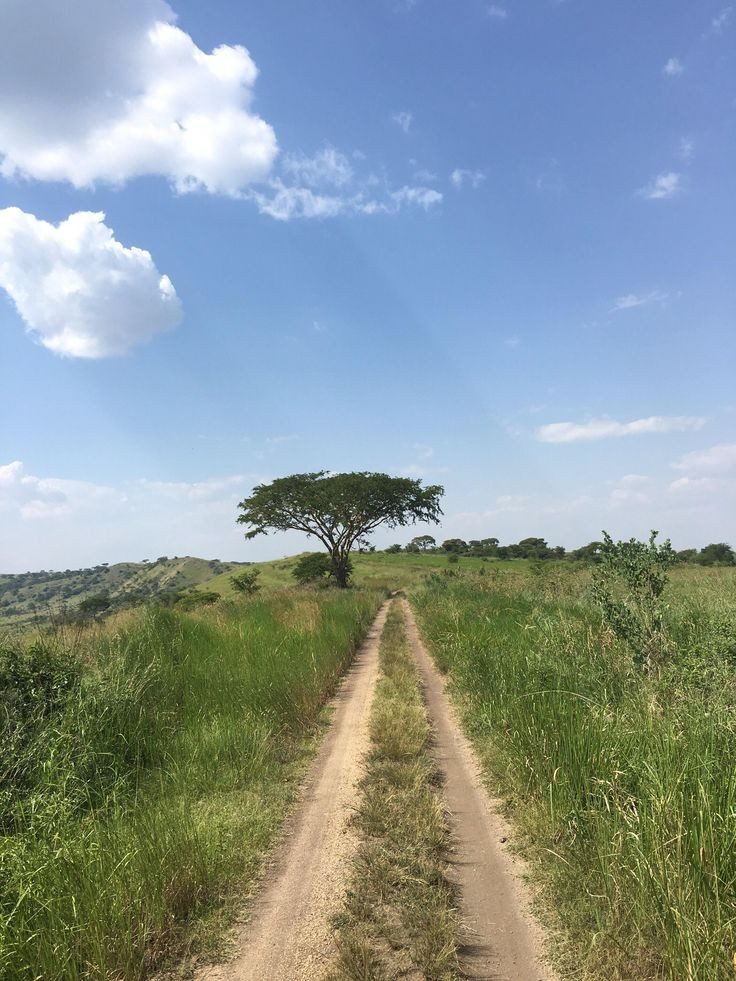The best time to go on a Uganda safari depends on your specific interests and priorities, as well as the wildlife viewing opportunities you seek. Uganda, one of Africa’s premier destinations, offers an array of travel experiences, from mountain gorilla trekking to wildlife viewing, chimpanzee trekking, mountain climbing, and cultural immersions. Positioned in the tropics, Uganda boasts a climate that remains relatively consistent year-round, punctuated by distinct wetter and drier seasons. The dry season spans from June to early September and December to February, while the wet season stretches from March to May and late September to November. Despite Uganda’s equatorial climate, there are fluctuations in temperature and rainfall throughout the year.
During the dry season, daytime temperatures range between 26°C to 29°C, with colder evenings, clear skies, and easy access to animals. On the other hand, during the rainy season, landscapes flourish with verdant vegetation as the country thrives with breathtaking landscapes. Temperatures continue delightfully mild, averaging approximately 26°C. Here is a guide on the best time to go on a Uganda Safari by season; https://www.audleytravel.com/us/uganda/best-time-to-visit#:~:text=The%20best%20time%20to%20visit%20Uganda%20is%20during%20its%20two,as%20between%20February%20and%20March.

When is the Best Time to go on a Uganda Safari?
Dry Season (June to August, December to February)
Generally, Uganda lies in the Equatorial climate region, which makes it a year-round safari destination. However, any frequent African traveler will tell you that the long dry season from June to August and the short dry season from December to February are the best time to go on a Uganda safari.
The absence of rainfall during these seasons, tends to result in increased visitor numbers, lured by the normally superb game-viewing conditions which include dry roads and paths in national parks. The dry season also offers clearer skies, making it easier to spot animals in national parks such as Murchison Falls, Queen Elizabeth, Lake Mburo, and Kidepo Valley. Vegetation is less dense during this time and animals concentrate on water sources, making them easier to spot and wildlife sightings more frequent.
For the best time to go on a Uganda safari, consider planning your gorilla trekking adventures in Bwindi Impenetrable National Park and Mgahinga Gorilla National Park during the dry season, although it’s a year-round activity. With less dense vegetation and drier terrain, trekking becomes more manageable, especially as mountain gorillas descend to lower slopes in search of food. Similarly, chimpanzee trekking in Kibale Forest National Park, Queen Elizabeth National Park’s Kyambura Gorge, and Murchison Falls National Park’s Budongo Forest is also easier during this period, enhancing your chances of unforgettable wildlife encounters.
Advantages of Going on a Uganda Safari During the Dry Season
Optimal Wildlife Viewing: During the dry season which is the best time to go on a Uganda safari, animals congregate around water sources, heightening your chances of spotting a wide variety of species. This phenomenon enhances the safari experience as wildlife sightings become more frequent, allowing visitors to marvel at the diverse array of fauna that call Uganda’s national parks home.
Clear Skies and reduced rainfall: During the dry season, which is considered the best time to go on a Uganda safari, clear skies and reduced rainfall enhance visibility for wildlife viewing and photography. With picturesque landscapes and vibrant wildlife shots, safari-goers can capture memorable moments amidst the stunning natural beauty of Uganda’s national parks.
Accessible roads and trails within national parks facilitate easier navigation for safari vehicles, allowing access to more areas within the parks. This becomes particularly advantageous making it the best time to go on a Uganda safari.
The best Gorilla Trekking Conditions: For the best time to go on a Uganda safari, gorilla trekking is generally more manageable during the dry season, offering less muddy trails and a smoother experience for trekkers. This season provides optimal conditions for exploring the dense forests of Bwindi Impenetrable National Park and Mgahinga Gorilla National Park, increasing your chances of encountering these majestic primates in their natural habitat.
Lower Risk of Mosquitoes and Insects: Fewer mosquitoes and insects compared to the wet season reduce discomfort and the risk of insect-borne diseases during outdoor activities, making it the best time to go on a Uganda safari.
Ideal Photography Conditions: Clear skies, vibrant landscapes, and abundant wildlife sightings create ideal conditions for photography enthusiasts to capture stunning wildlife and nature shots.
Disadvantages of Going on a Uganda Safari During the Dry Season
Overcrowding in National Parks: Popular parks and attractions may experience higher tourist numbers during the dry season, leading to more crowded safari experiences and accommodations.
Hotter Temperatures: Dry season months can be hotter, especially during midday safaris, requiring visitors to stay hydrated and take precautions against sun exposure.
Limited Availability in Popular Accommodations: Due to high demand, popular lodges and accommodations may book up quickly during the dry season, requiring tourists to book in advance.
Too much dust: Unbearable dusty conditions can occur, especially on game drives, which may impact visibility and comfort for some visitors.
Higher Costs: The peak season status of the dry months can lead to higher costs for accommodations, permits (such as gorilla permits), and tour packages compared to the low season.

Wet Season (March to May and September to November)
Experience the best time to go on a Uganda safari by planning your visit during the country’s two rainy seasons: March to May and September to November. Despite occasional heavy showers and cool temperatures, these seasons transform Uganda into a lush paradise, adorned with vibrant green landscapes. It’s the perfect time to immerse yourself in the country’s breathtaking scenery while exploring renowned wildlife parks like Murchison Falls, Kidepo Valley, and Queen Elizabeth, which offer unparalleled opportunities for wildlife viewing at the onset of the wet seasons.
The wet season is also the best time to go for a birding safari in Uganda. Uganda is one of Africa’s top birding safaris, home to over 1,000 recorded bird species that can be explored all year. But during the wet season, there is plenty of food for the birds which attracts many migrant species. Gorilla trekking in Bwindi and Mgahinga is also possible during the wet season, but hiking conditions may be more challenging due to rainfall.
Advantages of Going on a Uganda Safari During the Wet Season
Lush Green Landscapes: The wet season brings abundant rainfall, resulting in lush vegetation and green landscapes throughout Uganda’s national parks. This creates picturesque scenery and vibrant environments for wildlife photography.
Fewer Tourists: Experience the best time to go on a Uganda safari by opting for the wet season, which typically sees fewer tourists and safari-goers compared to the dry season. This translates to more intimate wildlife encounters and a quieter safari experience, allowing you to truly immerse yourself in the beauty of Uganda’s wilderness.
Migratory Birds and Baby Animals: The wet season coincides with the birthing and breeding season for many birds and animals. It’s also a time when migratory bird species visit Uganda, offering unique opportunities for birdwatching. For the best time to go on a Uganda safari, this season provides wildlife enthusiasts and birdwatchers alike with a chance to witness the abundance of life and activity in the country’s diverse ecosystems.
Lower Rates on Accommodation: Experience the best time to go on a Uganda safari by taking advantage of reduced demand during the wet season. Accommodations and safari packages are often more affordable during this time compared to the peak dry season months, allowing you to enjoy your safari adventure without breaking the bank.
Cooler Temperatures: The wet season often brings cooler temperatures compared to the hot and dry months, making outdoor activities and game drives more comfortable, especially during early mornings and evenings. For the best time to go on a Uganda safari, this season presents an opportunity to experience the country’s natural wonders in a more temperate climate.
Disadvantages of Going on a Uganda Safari During the Wet Season
Heavy Rainfall and Mud: The wet season is characterized by frequent and sometimes heavy rainfall, leading to muddy and slippery conditions on roads and trails. This can make transportation, gorilla trekking, and wildlife viewing more challenging.
Reduced Wildlife Visibility: Thick vegetation resulting from the rains can obstruct views and make it harder to spot wildlife, especially elusive species hiding in dense foliage.
Limited Access to Certain Areas in the National Parks: Some roads within national parks may become impassable due to flooding or mudslides, limiting access to certain wildlife-rich areas and affecting safari itineraries.
High Risk of Mosquitoes and Insects: The wet season attracts more insects, including mosquitoes and biting flies. Travelers may need to take precautions against insect bites and mosquito-borne diseases.
Gorilla Trekking Challenges: Gorilla trekking trails can be muddy and slippery during the wet season, requiring extra caution and potentially making hikes more strenuous.
Potential Safari Disruptions: Heavy rains can lead to interrupted or canceled game drives, affecting planned activities and wildlife sightings.
Ultimately, the best time to go on a Uganda safari depends on what you hope to experience. If you prioritize optimal wildlife sightings and easier travel conditions, the dry season may be ideal. However, if you prefer fewer crowds, and lush landscapes, and don’t mind the occasional rain shower, the wet season can offer a unique safari experience as well. It’s essential to plan your trip based on your preferences and priorities.




One Response
I’m excited to try out some of the tips you’ve shared here.